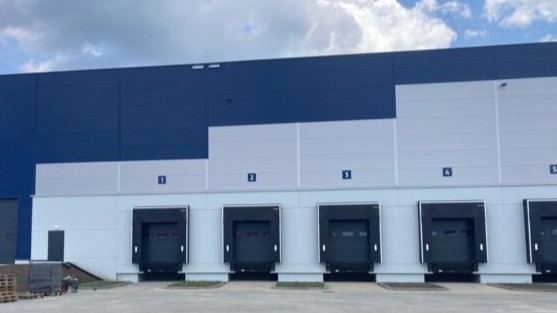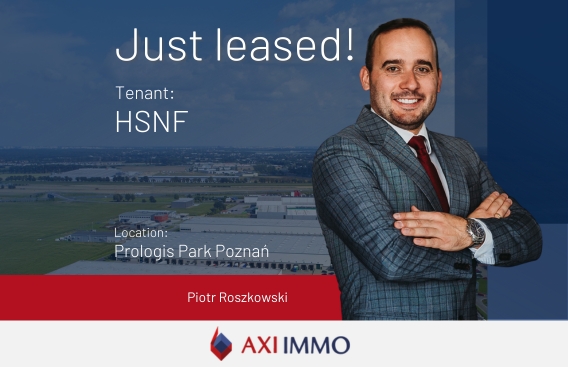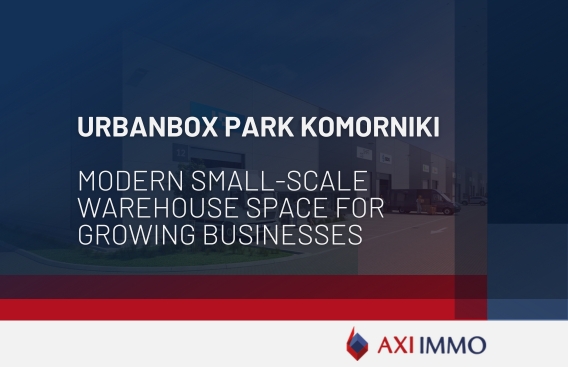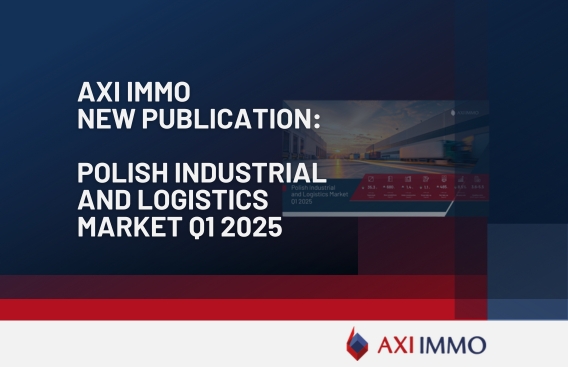Report: Industrial Market in Poland Q3 2016 prepared by AXI IMMO
Report Industrial Market in Poland Q3 2016
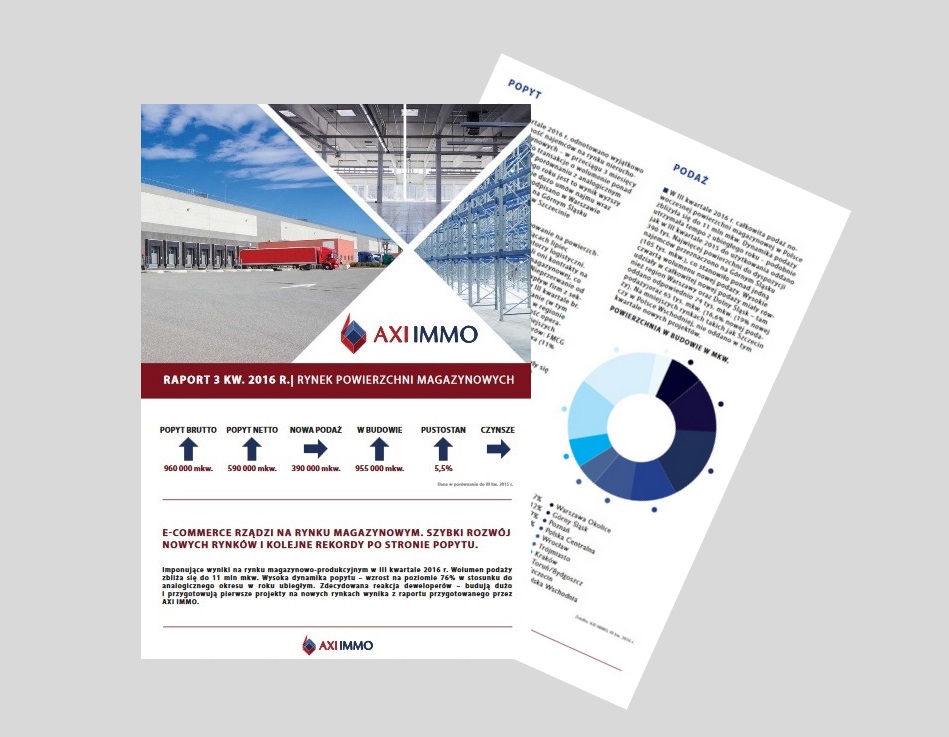
E-commerce rules the warehouse market. The rapid development of new markets and further demand records. Almost 1 mln sqm leased within 3 months. See the Report Industrial Market in Poland Q3 2016.
Impressive results on the industrial market in Q3 2016. Supply volume is approaching 11 million square metres. High growth rate of demand – an increase of 76% compared to the same period last year. Marked reaction of developers – they are building a lot and preparing their first projects in new markets, according to a report industrial market from AXI IMMO.
If you want to download full-version of the report industrial market in PDF, click the following link:
AXI IMMO Report Industrial Market Q3 2016 Poland – pdf
Demand
In the third quarter of 2016, extremely high activity among tenants in the warehouse market was recorded – over the 3 months the total transaction volume was 900,000 sqm. This result is 76% higher compared with the same period last year.
A particularly large number of leases and extensions were signed in:
- Warsaw (approx. 234.000 sqm),
- Upper Silesia (225,000 sqm)
- Szczecin (160,000 sqm).
The greatest demand for warehouse space in July-September came from logistics operators. Since the beginning of the year, they have signed contracts for 850,000 sqm of warehouse space, which represents 43% of gross demand.
For the last two years, a large, continuous inflow has been observed of companies from the e-commerce sector, which in the third quarter as well reported significant demand (including the Zalando agreement for 130,000 sqm in the Szczecin region) and raised the activity of logistics operators.
The most active tenants also include companies from the following sectors: FMCG (13% of gross demand) and construction (11% of gross demand).
The largest contacts included BTS investments: in the Szczecin market for Zalando (130,000 sqm) carried out by Goodman, in Upper Silesia for IFA Rotorion (34,000 sqm) and Toy Story (27,000 sqm) – carried out by Panattoni, and the Jysk expansion in Central Poland (20,000 sqm in Logistic City).
Major lease transactions for e-commerce giants, business growth in the logistics sector, and the expansion and relocation of companies from the FMCG and production sectors mean that at the end of the year we expect another record to be beaten on the demand side.
The volume of transactions in the rental market at a level of 2.7 to 3 million sqm, a result we can expect at the end of the year, is comparable with the results in mature markets such as France or the UK. The Polish warehouse market is not only a regional leader, but also a significant market within Europe – says Renata Osiecka, Managing Partner at AXI IMMO.
Supply
In the third quarter of 2016, the total supply of modern warehouse space in Poland approached 11 million square metres. Supply maintained its pace from last year – as in the third quarter of 2015, 390,000 sq m were put into use.
Most space was made available to tenants in Upper Silesia (105,000 sq m), which accounted for over a quarter of the volume of new supply. Warsaw and Lower Silesia also had a high share of total new supply, where 74,000 m2 (19% of new supply) and 65,000 m2 (16.6% of new supply) were delivered, respectively. In smaller markets, such as Szczecin or in Eastern Poland, no new projects were completed.
Major facilities completed in the third quarter of 2016 include projects such as:
- the multi-tenant Panattoni Sosnowiec III (41,400 sqm)
- Panattoni Krakow III (34,500 m2)
- as well as a BTS for Tesco in Segro LP Poznan (30,000 sqm).
At the end of September 2016, the volume of warehouse space under construction amounted to 955,000 sq m, i.e., 59% more compared to the same period last year. 70% of the space under construction was secured by lease agreements, while the remaining 30% were speculative investments or partly speculative.
Due to the Zalando project, most space is being built in Szczecin (170,000 sq m), followed by Poznan (158,000 sq m), Bydgoszcz (130,000 sq m), and Lower and Upper Silesia (114,000 sq m and 110,000 sq m, respectively).
In addition, nearly 100,000 sq m is being built in Central Poland, where for several quarters there has been an acute lack of free space.
Vacancy rate
At the end of the third quarter of 2016, the vacancy rate in the Polish warehouse market was 5.5%. Compared to the same period last year, the rate increased slightly by 0.2%.
High activity among developers set against a background of high demand means that the vacancy rate remains at a stable, low level.
After record demand in the first half of the year for warehouse space in Szczecin, Torun and Bydgoszcz, the availability of space in these regions at the end of the third quarter fell to zero.
The low vacancy rate was maintained in Central Poland (2.42%) and Poznan (3.46%). Low vacancy levels were also recorded in Gdansk and Warsaw, where the rates are 8.7% and 8% respectively.
Rents
Record demand from tenants in the third quarter has not led to an increase in rental rates. Although there is no shortage of companies that want to rent industrial space, the increase in the supply of warehouses has blocked potential increases.
Base rents remained at a stable level in most locations, within the range of 2.4 to 3.5 EUR per square metre. The lowest effective rates, even below 2 euros, can be obtained in and around Warsaw and Poznan.
Forecasts
On the demand side, we expect the high growth rate to be maintained and successive records to be broken. The last months of the year are a period when most negotiations for new contracts and extensions are concluded. The good macroeconomic situation, high internal consumption, and new investments from foreign companies are the factors behind the high demand side figures.
The high level of activity among developers remains. and new investments will be made not only in the largest logistics and storage hubs, such as Warsaw, Upper Silesia, and Poznan, but also in smaller, yet unexplored markets such as Zielona Góra, Białystok, and Kutno, where developers are planning their first projects. As a result, a greater pool of potential locations for customers is appearing, and so far popular locations will have to fight harder for tenants in some segments. This is a new, interesting situation for both tenants and landlords. Rents will remain at the current level. Alternatively, a slight increase in rates may occur in markets with low vacancy rates.
Report Industrial Market in Poland Q3 2016 was prepared by AXI IMMO.
If you need additional information, please contact us.
Recent articles
23 June 2025
Panattoni Park Warsaw West Błonie near Warsaw, Poland, with a new warehouse for logistics operator
Panattoni Park Warsaw West - key location and modern warehouse spaces
23 June 2025
HSNF renews lease at Prologis Park Poznań I – Beauty sector tenant continues operations in Greater Poland
HSNF continues its logistics operations in Poland in Poznan region
25 May 2025
UrbanBox Park Komorniki – modern small-scale warehouse space for growing businesses, near Poznan, Western Poland
Urbanbox Park Komorniki warehouse complex with modules from 167 sq m. in a strategic location near Poznań.
15 May 2025
AXI IMMO market report: Poland’s Industrial & Logistics Market Q1 2025
AXI IMMO presents its latest market report "Polish Industrial and Logistics Market Q1 2025."
